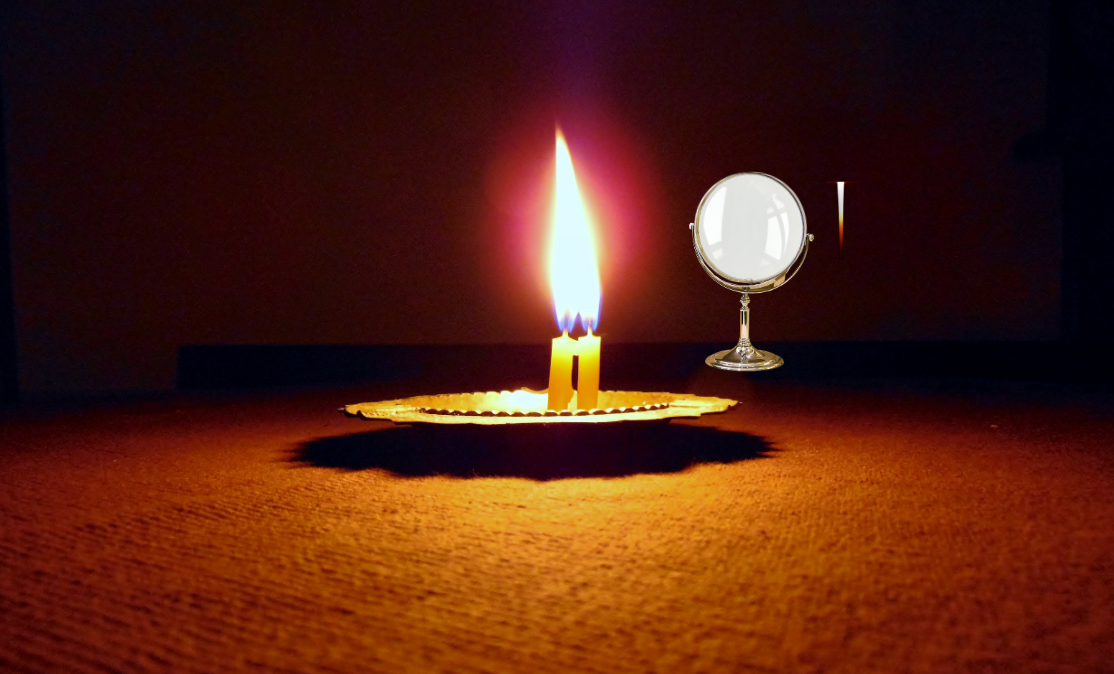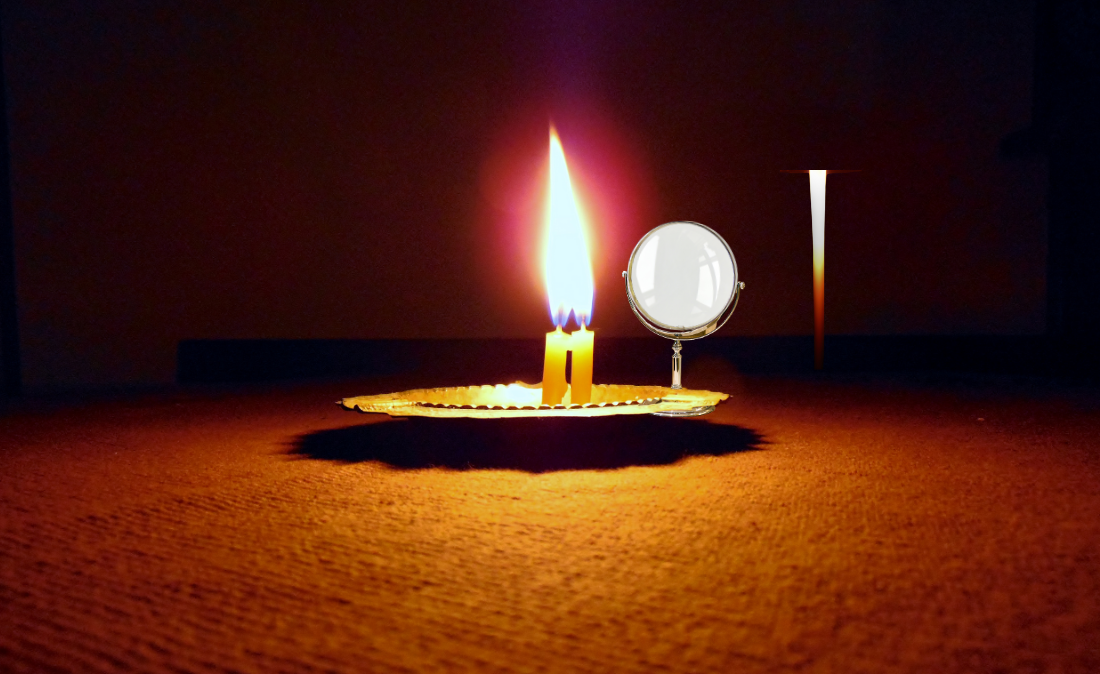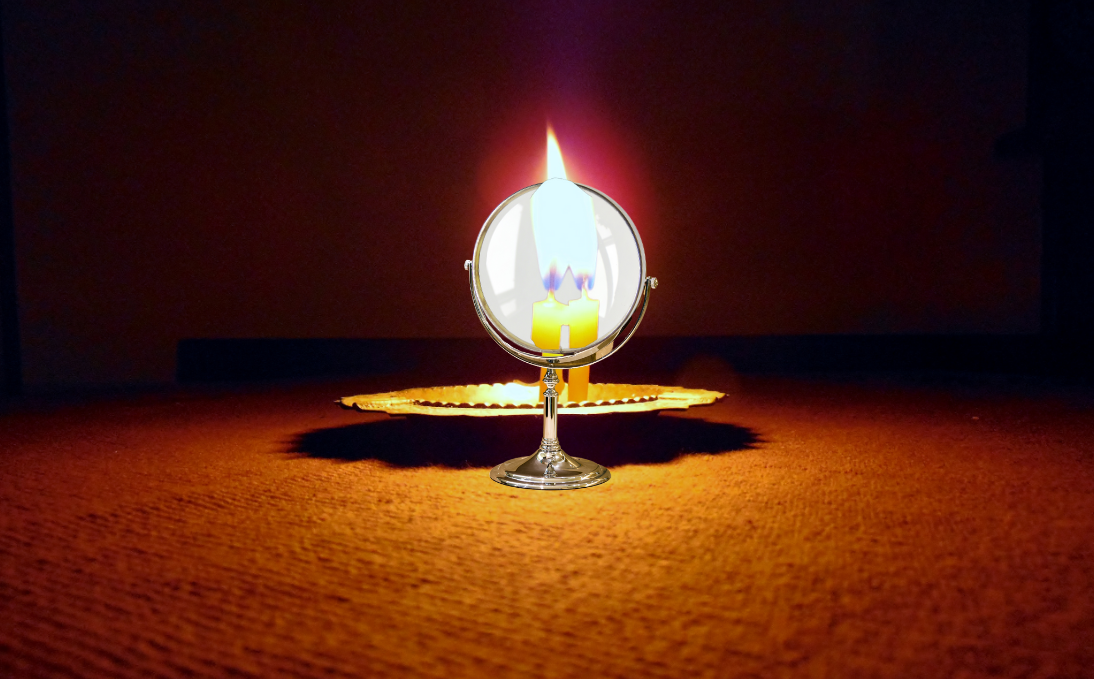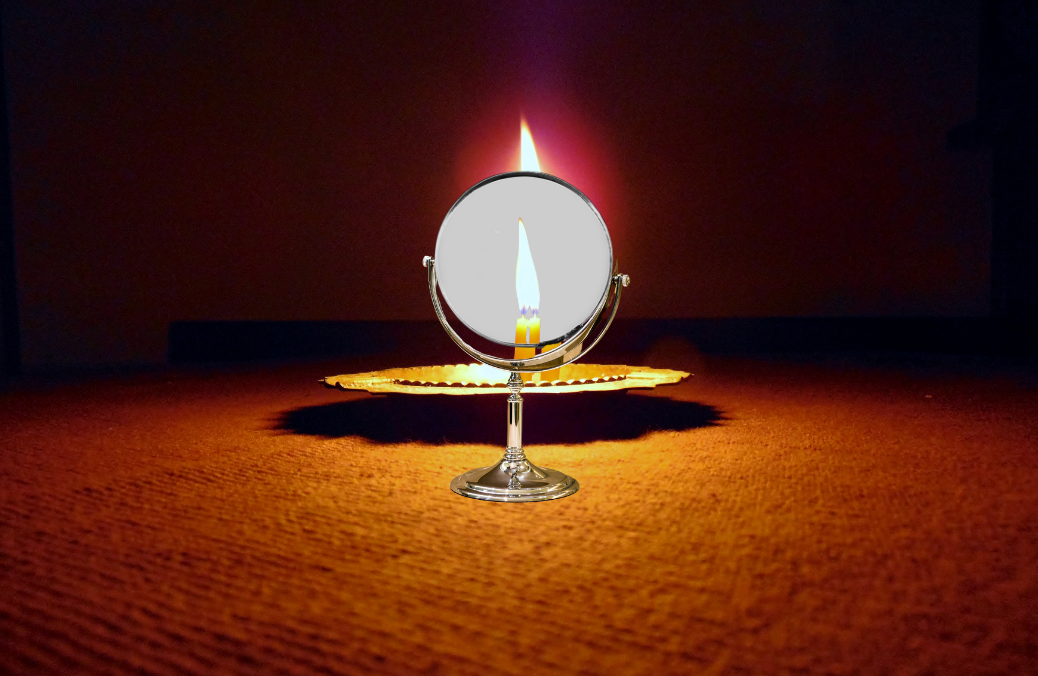10. Complete Activity 11.10 (Page 133). Take a convex lens and fix it on a stand as you did with the concave mirror. Place it on a table. Place a lighted candle at a distance of about 50 cm from the lens. Try to obtain the image of the candle on a paper screen placed on the other side of the lens. You may have to move the screen towards or away from the lens to get a sharp image of the flame. What kind of image did you get? Is it real or virtual? Now vary the distance of the candle from the lens. Try to obtain the image of the candle flame every time on the paper screen by moving it. Record your observations as you did in Activity 11.7 for the concave mirror. Did you get in any position of the object an image which was erect and magnified? Could this image be obtained on a screen? Is the image real or virtual?
In a similar fashion study the images formed by a concave lens. You will find that the image formed by a concave lens is always virtual, erect and smaller in size than the object.
Answer:
The activity can be carried out as follows:
Aim: To study the images of a candle formed by a convex lens by positioning it at varying distances from the lens.
Materials Required: Convex lens, stand, lighted candle, white paper sheet, cardboard sheet (about 15 cm × 10 cm).
Procedure:
Part 1:
(i) Fix the convex lens on a stand (any arrangement to keep the mirror steady would do) and place it on a table.
(ii) Make the screen bypasting the piece of white paper on the 15 cm × 10 cm cardboard sheet.
(iii) Keep the lighted candle on the table at a distance of about 50 cm from the mirrorand try to obtain the image of the candle on a paper screen placed on the other side of the lens. If necessary, move the screen towards or away from the lens till a sharp image of the flame is obtained.
(iv) Now move the candle towards the lens and place it at distances of 40 cm, 30 cm, 20 cm, 10 cm and 5 cm from it. In each case try to obtain the image on the screen and record the details of each image in Table 11.3.
Part 2:
Similarly examine the images of the candle formed by a concave lens at distances of 50 cm, 40 cm, 30 cm, 20 cm, 10 cm and 5 cm from it.
Observations:
Part 1:
The details of the images of the flame formed by the convex lens for each distance are recorded in Table 11.3 below:
Table 11.3 Image formed by a convex lens for object placed at different distances from it
| Distance of the object from the mirror | Smaller/larger than the object | Character of the image | |
| Inverted/Erect | Real/Virtual | ||
| 50 cm | Smaller than object | Inverted | Real |
| 40 cm | Smaller than object | Inverted | Real |
| 30 cm | Smaller than object | Inverted | Real |
| 20 cm | Slightly smaller than object | Inverted | Real |
| 10 cm | Much larger than object | Inverted | Real |
| 5 cm | Larger than object | Erect | Virtual |
The image formed at a distance of 50 cm is real, inverted and smaller than the object as shown below:

The image formed at a distance of 10 cm is real, inverted and larger than the object as shown below:

The image formed when the candle was closest to the lens at a distance of 5 cm away was virtual, erect and magnified. Since the image was virtual it could not be obtained on a screen. This is shown below:

Part 2: The details of the images of the flame formed by the concave lens for each distance are recorded in Table 11.4 below:
Table 11.4 Image formed by a concave lens for object placed at different distances from it
| Distance of the object from the mirror | Smaller/larger than the object | Character of the image | |
| Inverted/Erect | Real/Virtual | ||
| 50 cm | Smaller than object | Erect | Virtual |
| 40 cm | Smaller than object | Erect | Virtual |
| 30 cm | Smaller than object | Erect | Virtual |
| 20 cm | Smaller than object | Erect | Virtual |
| 10 cm | Smaller than object | Erect | Virtual |
| 5 cm | Smaller than object | Erect | Virtual |
The images for all the distances are all virtual, erect and smaller in size than the object as shown below:

Conclusions: We conclude that:
- Convex lenses can form both real or virtual images. When the object is close to the lens the image formed in virtual and erect and larger in size. As the object is moved further away the image formed is real and inverted and at first is larger than the object. It then decreases to a smaller size than the object as distance increases.
- Concave lenses always form images which are virtual, erect and smaller in size than the object.
“Take a convex lens and fix it on a stand as you did with the concave mirror. Place it on a table. Place a lighted candle at a distance of about 50 cm from the lens. Try to obtain the image of the candle on a paper screen placed on the other side of the lens. You may have to move the screen towards or away from the lens to get a sharp image of the flame. What kind of image did you get? Is it real or virtual? Now vary the distance of the candle from the lens. Try to obtain the image of the candle flame every time on the paper screen by moving it. Record your observations as you did in Activity 11.7 for the concave mirror. Did you get in any position of the object an image which was erect and magnified? Could this image be obtained on a screen? Is the image real or virtual?
In a similar fashion study the images formed by a concave lens. You will find that the image formed by a concave lens is always virtual, erect and smaller in size than the object.” – Solved.
Related Links:
Solution to Extended Learning Problem 1
Solution to Extended Learning Problem 2
Solution to Extended Learning Problem 3
Solution to Extended Learning Problem 4
Solution to Extended Learning Problem 5
Solution to Extended Learning Problem 6
Solution to Activity 11.1
Solution to Activity 11.2
Solution to Activity 11.3
Solution to Activity 11.4
Solution to Activity 11.5
Solution to Activity 11.6
Solution to Activity 11.7
Solution to Activity 11.8
Solution to Activity 11.9
Solution to Activity 11.10
Solution to Activity 11.11
Solution to Activity 11.12


